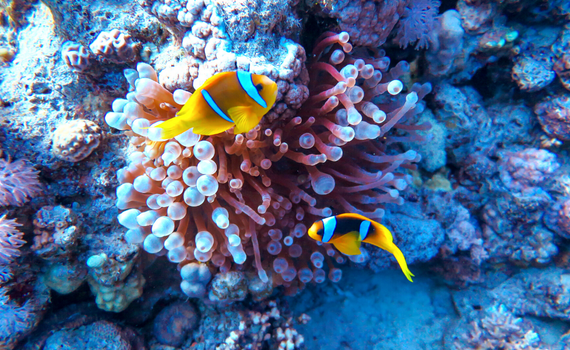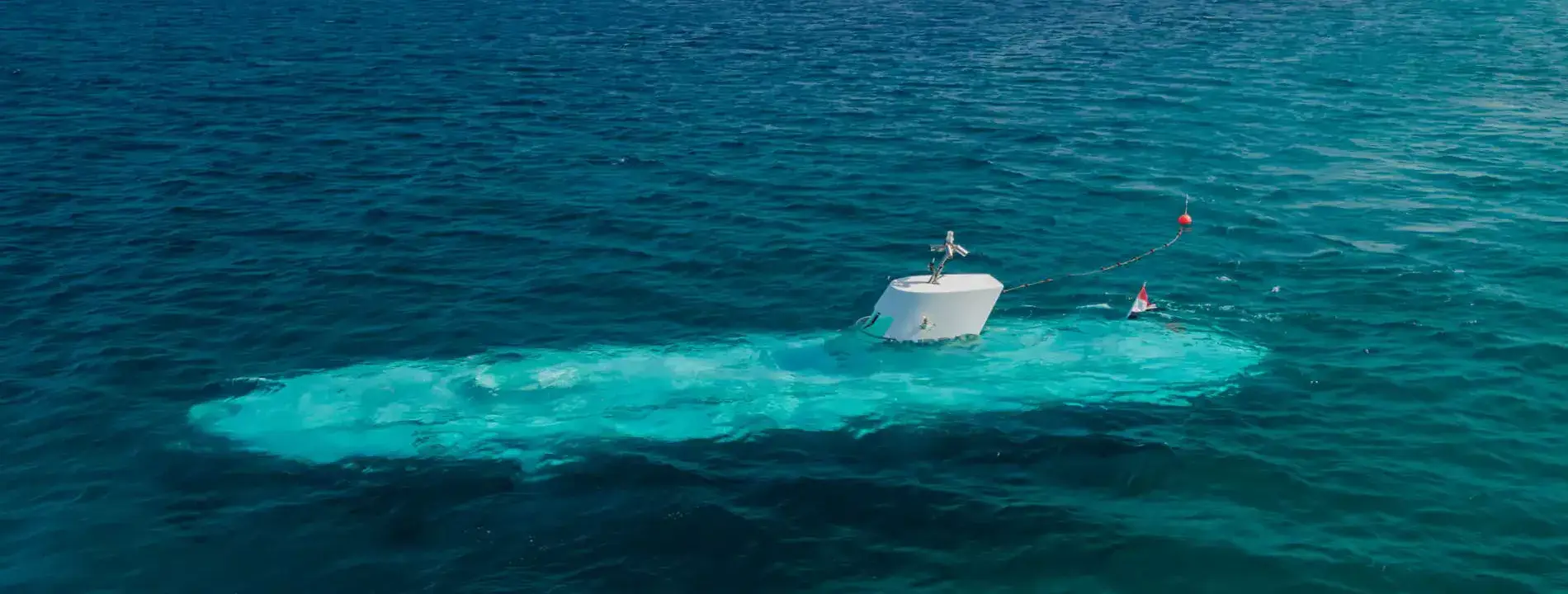
Mimicry is the intriguing art of camouflage. Animals like reef fishes resort to mimicry to blend in with their environment. They also do this to escape and mislead their predating enemies. It’s also exerted as a technique to capture their prey.
One distinguishes various phenotypes. The frogfish has warts that resemble algae; some species even have algae growing on their bodies. Some types of wrasses can roam around like a clump of seaweed. Some groupers can become almost undetectable, sporting a striped body pattern. Red Sea mimic blennies protect themselves from would-be predators by convincing the predator that they are one of the venomous ‘meiacanthids’, whose colorization is very similar. Ghost pipefishes are masters in the technique of camouflage. The ornate pipefish will adopt the coloration of the environment it settles in after its larval stage. Ghost pipefishes use their capacity to camouflage as a defensive measure to avoid being spotted by predators. It’s also a means to easily approach their prey. The blue-striped fangblennies mimic the juveniles of the bluestreak cleaner wrasse to loiter at cleaner stations and dupe clients waiting for a cleaning service.
We distinguish various types or classifications of mimicry: Batesian mimicry, Müllerian mimicry, social mimicry, aggressive mimicry, and cleaner mimicry.
Batesian mimicry is the survival art of imitating signals of dangerous creatures and predators for self-protection. This is where otherwise unprotected animals resemble or ‘mimic’ a protected species. Imagine being ‘unappetizing’ in a non-palatable guise, equipped with nasty spines, or appearing poisonous. Some species sport a distinctive color pattern that predators are happy to avoid.
Most of the mimicry observed in coral reef fishes falls into this category. Just take a look at fish ‘impersonating’ toxic flatworms. A predator will think twice before going on a marauding mission.
Müllerian mimicry is rare in itself but common in the world of, for instance, the blenny. Fish operate as a 'tag team' to fool predators. The worth of note is blennies, equipped with fangs resembling one another.

